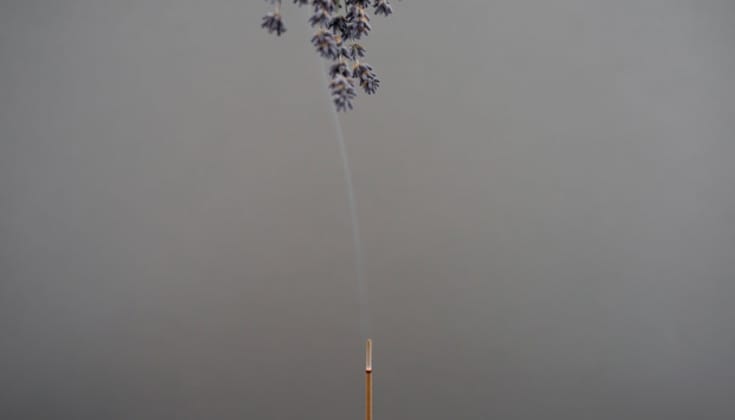My shoulders, back, and neck screamed at me in the quiet meditation hall. It was 9:00 pm on day three of the ten-day silent retreat. With breaks for meals and evening tea, we’d sat since 5:30 that morning. Every muscle ached for the sound of the bell that would signal the end of the session.
The Forest Way Monastery and Retreat Center lay nestled in the Appalachian Mountains of West Virginia. Wet December cold penetrated the walls. The chill contrasted to the warm glow at the front of the meditation hall, where a 700-pound golden Buddha dominated the altar. Buddha dwarfed the three candles burning in front of him and the vase of fresh flowers at his feet. Yellow pine beams framed the altar and soared skyward to support the room’s high arched ceiling.
In the candlelight, thirty-five retreatants sat on cushions on the floor, or chairs at the back of the room—men on the left and women on the right. I sat in a chair, resisting the urge to fidget, fighting off the thoughts of bed. And finally, one low tone from the bell rewarded my efforts. My body sighed in relief. The shadowy figures in front of me shifted and the hall rustled with the sounds of shoulders relaxing, torsos twisting, and arms stretching. Here and there I heard the crack of stiffened joints. Coughs and sneezes replaced the silence. We folded our shawls and blankets. We buttoned our sweaters and pulled on our hats, preparing to walk to our rooms. And then we waited.
Custom dictated that lay people stayed in the hall until all the monastics left first. That evening four monks and three nuns had meditated with us. In slow motion, they unfolded themselves from their sitting positions, prostrated three times before the altar, and stood. Like a flotilla of tall ships, their robed figures floated toward me down the long center aisle. One by one, they exited the door beside me.
Until a single monk remained at the front of the hall. The vice abbot, Bhante Rahula, sat cross-legged on the floor still wrapped in his shawl. Several people stood and peered at him. Bhante sat like a stone. He paid no attention to us. After a few minutes passed, many of our group walked out hesitantly. A second long pause, then others left the hall, singly and in clumps of two or three. They looked back toward the solitary figure one last time before they passed through the door. Exhaustion cried out for me to follow them.
Eight of us remained. We stared toward the altar. Perched on the edge of my chair, I sensed movement in the front of the room. I squinted into the shadows. Bhante leaned forward. He reached out to touch an object I could not see, then withdrew his hand into the folds of his wrap.
Across the darkness I felt a long low rumble. The vibration of a single bass voice crept toward me on padded cat paws. I held my breath to hear better. The voice, joined by others, grew into a melodic chant in a language unfamiliar to me. The unknown hymn stretched and folded back upon itself. It expanded, contracted, then swelled again.
Every few minutes, I recognized an “Om.” The syllable slid like molten lava down a mountain, consuming life’s debris along its way. And then the chanting stopped, the hall grew quiet, until, gradually, sound returned. “Om” as Heart Sutra—shape-shifting into the emptiness of memory for two heartbeats. The silence no less resonant than the voice that interrupted it.
I had no idea who was chanting, what the words meant, or how long they would last. The sacred poetry bathed me. My pores absorbed its soothing balm, as it dissolved all traces of fatigue. My chest vibrated. My skin tingled. Curiosity evaporated. I rested in not knowing.
When the music stopped for the last time. I felt no disappointment at its end, and no hunger for its repetition. Gratitude filled the space where regret and desire usually collide.
Still seated, Bhante Rahula reached out to touch the unseen object again. He removed his shawl, folded it four times into a tiny square and laid it beside his cushion on the floor. After his prostrations, he stood with his robes draped loosely around him. He snuffed the flickering candles one by one, and his ghostly form glided down the aisle and out the door beside me.
The next day when I had an interview with Bhante Rahula, I still felt echoes of the experience the night before. I put my fist to my chest and leaned forward.
“Bhante Rahula, thank you for the chanting you played last night. When I heard it I felt the Truth of it …”
He finished my sentence “Yes. Without knowing what the words meant. Exactly.”
His usual somber expression softened. I thought I saw his eyes twinkle.
“Do you know who it was?” He sounded like a teenager bragging about his latest MP3 download.
“It’s the Dalai Lama performing a traditional Tibetan healing chant,” he announced.
Of course, I thought to myself. The Dalai Lama would have a singing voice that sounded like God. The vice abbot told me others had been similarly affected by the vibration of the chanting. Then he picked up something from the table in front of him.
“And now it’s yours,” he said.
It took me a second to realize he’d given me a CD in a square white envelope. I was stunned.
“This is mine, you’re giving this to me? Thank you so much.”
I forgot the questions I’d intended to ask him. The interview ended with my stammered gratitude, and I headed to my room with the cd in my hand. I tried to walk as slowly as the monks taught us, but I wanted to skip. I wanted to celebrate. The vice abbot gave me a present. In the light of my room, I noticed typing on the envelope.
“This is a recording of the Dalai Lama and his entourage chanting healing prayers at the sick bed of his old friend Vaclav Havel.” His Holiness had given permission for the cd’s to be given away, but never sold.
I imagined the Dalai Lama standing beside his friend. I imagined their affection. In the intimacy of that scene—in their willingness to share it with all of us who also need a healing prayer—I imagined I saw Truth.
For a month after the retreat ended, I lived with that healing prayer. Our sangha meditated with it; I went to sleep by it; I used it to soothe my daily stress. It became important.
Then I learned it was an impostor. In an email, a friend revealed the facts. He had recognized the words, researched the recording, and uncovered its actual origins. The chant was not Tibetan, the setting not a sick bed, and the voice not the Dalai Lama’s. The transcendent tones belonged to Hein Braat, a Dutch musician. The prayer not that at all, but a 4,000-year-old Hindu mantra. Maha-mrityun-jaya, a call for enlightenment. The sick bed tale was a bedtime story.
When I read the email, my stomach went crazy. It clenched. Acid rushed in to sear its walls. A tidal wave of resentment washed over me. I fumed. I felt stupid. I wanted the facts to be wrong.
The email included a link to the artist’s website. I glared at the link, wished it things that ruined my karma, and then clicked. I read that the Dalai Lama story had circulated on the internet and among meditation circles. My skeptic took over. The vice abbot of a monastery gave me the cd. How could he be wrong? How could that saintly voice be Dutch and not Tibetan? Dutch.
Hein Braat claimed a long-term study and practice of mystical chanting. Though apparently accomplished, well known, and respected in Europe, he certainly could not list “spiritual leader of the entire world” among his credits. Who was I going to believe, some anonymous web site, or a monk, a vice abbot for crying out loud?
Mr. Braat’s site offered his CDs for sale. I clicked on one of their icons to hear a sample of his voice. The sound was foggy, inconclusive. It failed to convince me that this was my guy. I clicked on another. By the fourth note, I recognized the voice. Its resonance pierced my heart like a flaming arrow, and incinerated the debate raging in my brain. The still place deep in my core responded once again. I surrendered.
Poor old ego. It’s always in danger of being made the fool. Its determination to be right dooms it to be proven wrong. Poor old me. My obsessive search for satisfaction condemns me to a life of constant disappointment.
When I believe the stories I create (and I create them all), disappointment follows. I became attached to the legend of the Dalai Lama chanting over the sick bed of a personal friend. After all, that’s my fantasy. My life’s been a sick bed and I yearned for someone to stand beside it, kissing my hair.
I suffer when life assaults my stories. But if I shift my focus away from them, I can glimpse the Truth. It hides in plain sight, behind the places where it’s not. Truth peeks around opinions and tiptoes past evidence.
Sanskrit or Tibetan, neither language can express it. Dalai Lama or Hein Braat, neither man can speak it. The facts revealed on a website are no closer to Truth than the myth typed on a cd cover. Both are stories, only signs along the road. Truth is a drop of mercury. Touch it with a word, and it slips away.
Each time I hear the mantra, Truth is the peace I feel—before I label it “peace.” It’s my tingling skin—before I call it “tingling.” It’s the gratitude—before I thank the universe. Truth is pure experience—before I decipher, define or describe it.
I’ll seek it now between the words. I’ll doubt everything I read, question everything I think I know, and reject everything I know for sure.
Because Truth transcends the facts.

